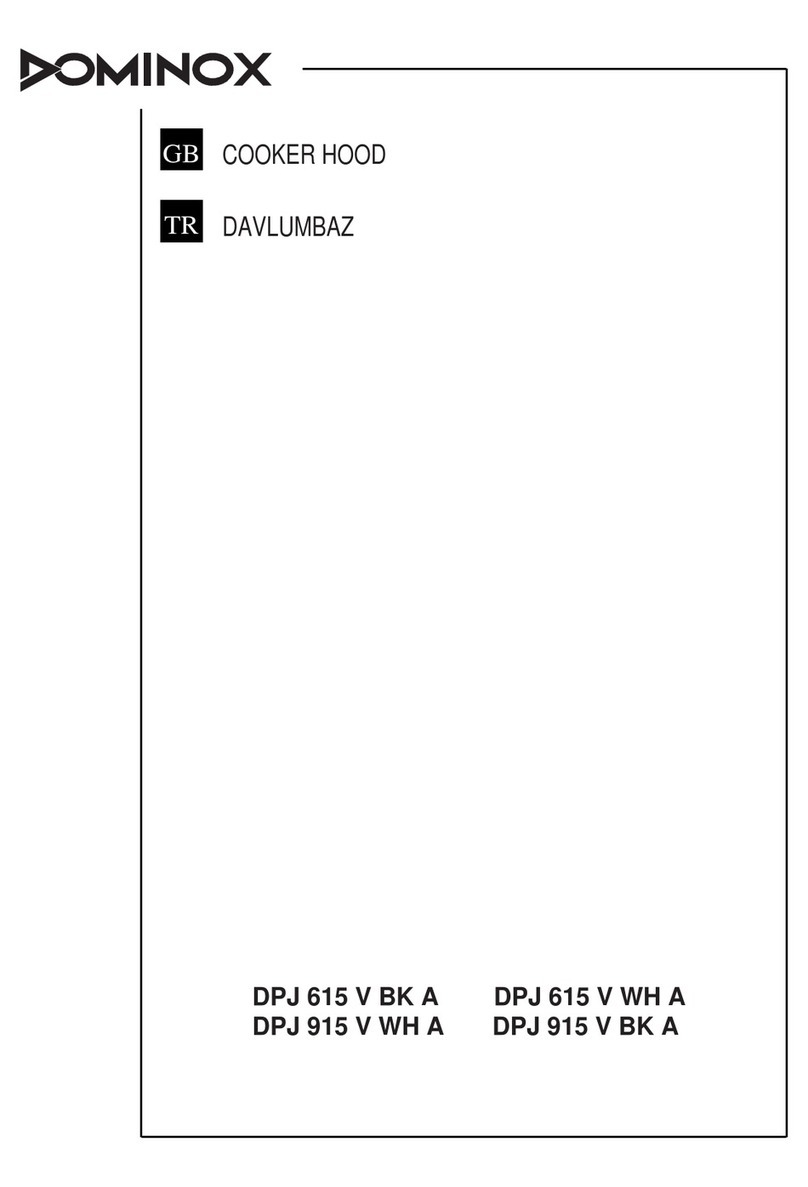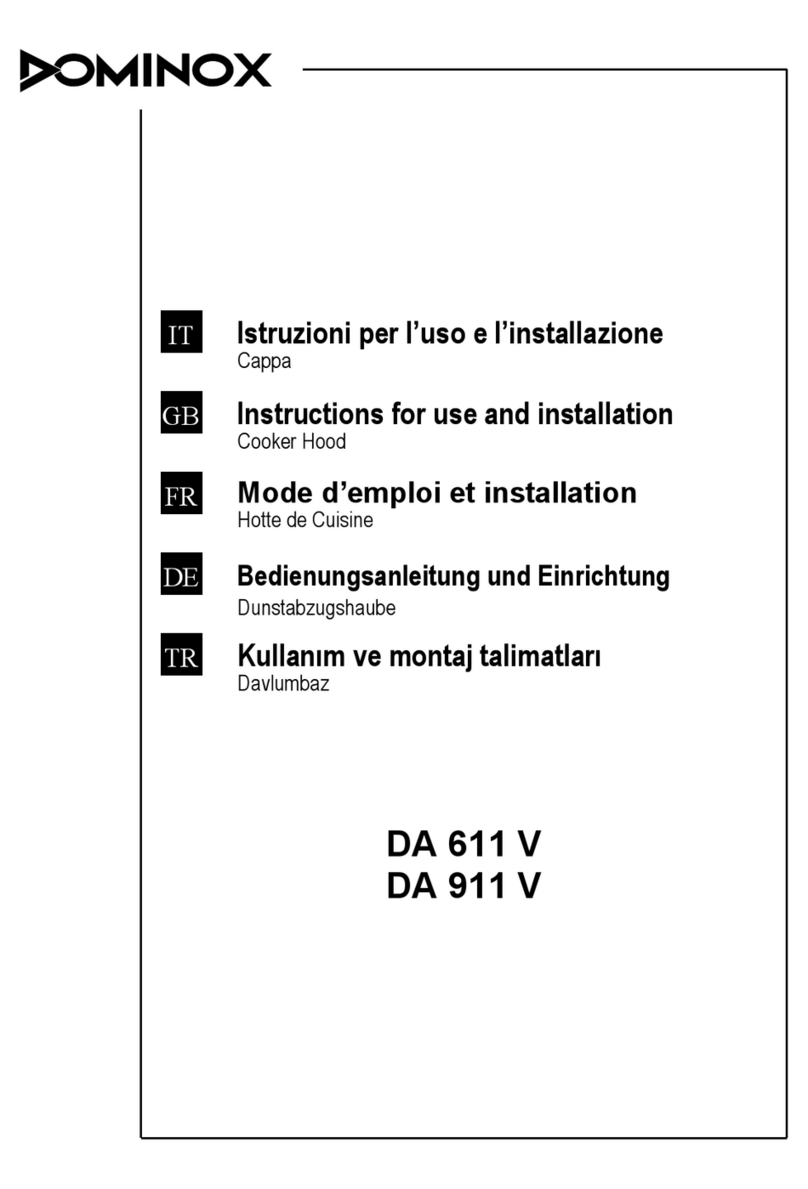
8
8
INSTALLAZIONE
2 - INSTALLAZIONE
Alcuni sistemi di installazione prevedono l'apertura e la rimozione della griglia di aspirazione.
2.1 - Apertura e rimozione della griglia di aspirazione
Per aprire la griglia, far scorrere verso il centro i tastini posti nella parte inferiore della cappa. La griglia
scenderà ruotando intorno ai due perni posteriori.
Con griglia aperta e verticale, far scorrere il perno posteriore di destra in avanti lungo l'asola laterale fino
a provocarne la fuoriuscita.
2.2 - Installazione sottopensile
a - Pensile preforato: collegare la cappa al pensile attraverso i fori predisposti sulla base del pensile, utiliz-
zando le 4 viti 4,2 x 44,4 in dotazione. Non è necessario aprire la griglia.
b - Pensile non forato:
b.1- Se alla cappa è allegata una maschera di foratura, seguire le istruzioni riportate su di essa.
b.2- Se non c'è maschera, aprire la griglia, appoggiare la cappa contro la base del pensile e avvitare
dall'interno direttamente al legno con viti 3,5 x 16, non in dotazione.
2.3 - Installazione a muro
a - Con l'ausilio della eventuale maschera di foratura fare 2 fori Ø 8 nel muro, applicare i due tasselli, inseri-
re due viti 4,2 x 44,4 lasciando 5 mm non avvitati, rimuovere la griglia di aspirazione, agganciare la cap-
pa alle due viti negli appositi fori asolati posteriori e procedere dall'interno al serraggio completo delle vi-
ti.
b - Se non è disponibile la maschera, praticare 2 fori Ø 8 (vedi dis.) ed inserire tasselli e viti, procedendo
come paragrafo a.
c - Per una installazione a muro tramite staffe (opzionali), attenersi alle istruzioni riportate nella apposita
maschera abbinata.
d - Rispettare l'avvertenza 1.6.
2.4 - Scelta della versione
a - Aspirante
Aprire la griglia di aspirazione e posizionare la leva o l'indice della manopola sulla posizione «aspirante»
al fondo della sua corsa. Eliminare, se applicata, la cartuccia di carbone attivo, svitando il pomello cen-
trale o ruotando lentamente in senso antiorario per sganciare l'attacco centrale a baionetta.
Collegare la tubazione esterna alla flangia Ø 100 mm (o Ø 120 mm su alcuni modelli) posizionata sulla
uscita superiore o posteriore secondo necessità. Applicare il tappo nel foro rimasto libero. Rispettare
tassativamente l'avvertenza 1.1.
b - Filtrante
Aprire la griglia di aspirazione e posizionare la leva o l'indice della manopola nella sua posizione filtrante
al fondo della sua corsa.
Applicare la cartuccia di carbone attivo al supporto motore con il pomello metallico centrale o ruotando
lentamente in senso orario per agganciare l'attacco centrale a baionetta. La tubazione esterna, se c'è,
può rimanere collegata.
2.5 - Connessione elettrica e controllo funzionale
1 - È necessario rispettare scrupolosamente le avvertenze 1.2, 1.3, 1.4 e 1.5 del paragrafo 1 relative alla
sicurezza.
2 - Effettuato il collegamento elettrico, verificare il corretto funzionamento di illuminazione, accensione del
motore, cambio delle velocità.

































